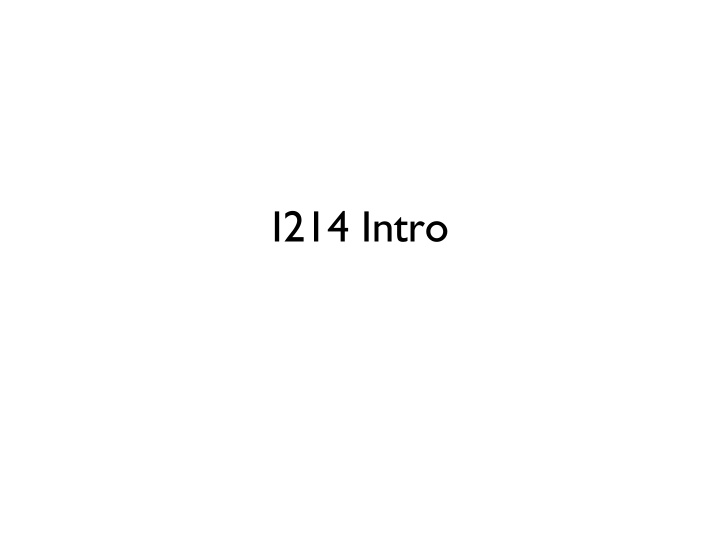



I214 Intro
Liz Goodman
http://courses.ischool.berkeley.edu/i214/f08/syllabus.php
A Very Short History of Usability • Rooted in cognitive psychology • Engaged in lab-based testing modeled after psych experiments • Min time/keystrokes, min errors • Decisions made by management
A Very Short History of Usability • More complex issues of error prevention, time saving • Greater variety of methods • Still largely business applications
A Very Short History of Usability Amazon, 1998 • Consumer sites: Voluntary use, competition • More emphasis on information and functionality, less on keystrokes • More emphasis on overall user experience
Iterative, user-centered design Requirements gathering Design specs Prototyping Testing Final design Testing Implentation/rollout
User Experience Research Requirements gathering Design specs Prototyping Testing Final design Testing Implentation/rollout Evaluation Redesign, next version
This Course I. Intro III. Methods What is usability, user experience Competitor analysis Critical approaches to: usability, users, use “Ethnographic” methods The iterative design process • interviews Usability, user research, user experience at • observations every step in the process Surveys, diary studies Concepts, methods of measurement and Focus groups evaluation & social science research Cultural probes methods Inspection methods (heuristics etc) The user experience mindset: noticing Testing (intro to experimental design) Document analysis II. Defining and doing a project Personas, scenarios, use cases Working with clients Universal usability -including: what is the real problem? International usability Scoping the project Choosing data collection methods IV. Management/org’l issues Analyzing and synthesizing findings Place in organization Making recommendations Relationship to other organizational functions, Reporting in various media incl design, market research Justifying usability
Textbook
First assignment: naive usability
Recommend
More recommend